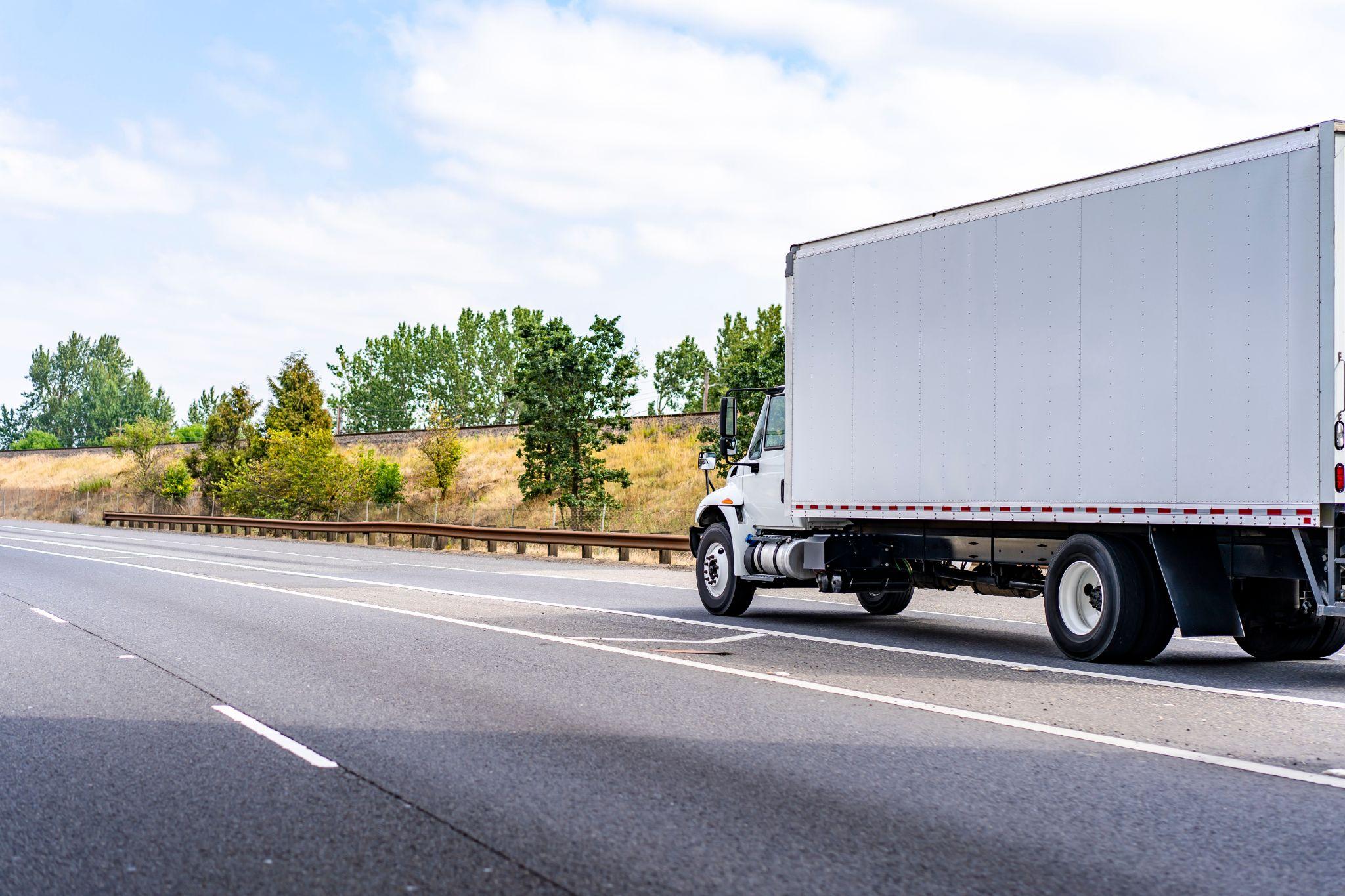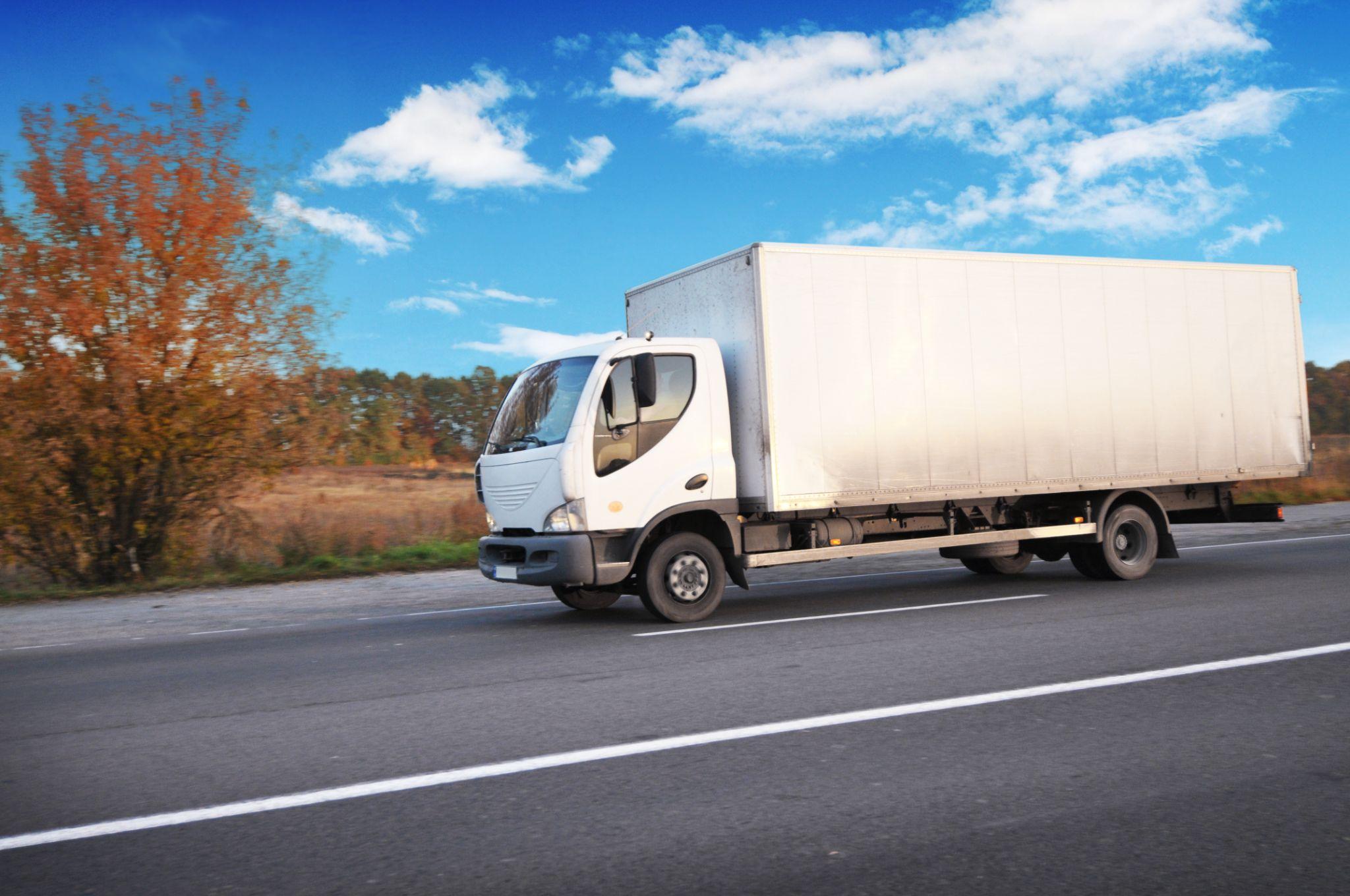Final mile courier challenges offer the most expensive and unpredictable stage of the logistics process. It can cause delays and frustrate customers. This stage is particularly challenging because of
- Complexities of urban environments
- High operational costs
- The need for seamless coordination
However, businesses can also leverage advanced technologies and adopt innovative strategies. That way, they can enhance their final mile delivery operations and meet customer demands better.
To address these challenges, many companies are turning to:
- Automation
- Route optimization
- Real-time tracking systems
These technologies streamline the delivery process and improve transparency and customer satisfaction. Moreover, you can integrate warehousing services with final-mile services. This allows for better inventory management and quicker order fulfillment.
Key Takeaways
- Implementing route optimization, real-time tracking, and AI-powered analytics enhances delivery efficiency, reduces costs, and improves customer satisfaction.
- Leveraging crowdsourced delivery personnel and micro-distribution centers helps businesses handle seasonal peaks, high-volume orders, and long-distance deliveries without compromising service quality.
- Providing real-time updates, flexible delivery options, and tailored experiences builds trust, loyalty, and a competitive edge in the final mile delivery market.
Major Challenges in Final Mile Courier Services
Navigating the intricacies of last-mile delivery presents many challenges that hinder efficiency. One primary obstacle is the complex nature of urban environments. Traffic congestion, limited parking, and navigating densely populated areas can be time-consuming. This causes delivery delays.
- High-rise buildings and narrow streets complicate route planning.
- Delivery windows are often tight, adding further pressure.
Increasing demand for same-day delivery pushes logistics providers. They must ensure rapid, reliable service from distribution centers to customers’ homes.
Managing long distances is another significant challenge. Rural and remote areas often require extensive travel. This makes cost-effective, timely deliveries difficult. Geographic spread can strain resources, increase operational costs, and impact efficiency.
- Fuel consumption rises with longer routes.
- Driver fatigue and vehicle wear increase maintenance needs.
Effective last mile delivery requires:
- Careful planning
- Advanced technology
- Resource optimization
You need these resources to meet customer expectations.
Rising Customer Expectations and Urban Delivery Obstacles
One of the most pressing challenges in last mile delivery services is meeting rising customer expectations. Consumers today demand faster, more reliable deliveries. They place a significant emphasis on same day delivery options. This expectation puts tremendous pressure on logistics providers to optimize their delivery processes.
Additionally, it can be difficult to maintain the efficiency and timeliness of mile deliveries. This is due to urban delivery obstacles such as:
- Traffic congestion
- Limited parking
- Navigating densely populated areas
These final mile courier challenges cause delays and increase operational costs. This impacts the overall performance of last mile delivery services.
Managing Long Distances and High Volume Deliveries
Another significant challenge in last mile courier services is long distance. This is especially true in rural and remote areas. Deliveries over extensive geographic areas are time consuming and costly. This makes it difficult to maintain efficiency and cost-effectiveness.
The surge in e-commerce has exacerbated this issue. It’s led to a higher volume of last mile deliveries that strain logistics networks.
Crowdsourced delivery models offer a potential solution to this problem. These models include working with independent contractors to fulfill orders.
However, they come with their own set of challenges, like inconsistent service quality and reliability. To overcome these issues, businesses need to adopt new technologies and strategic planning. You can can manage high volumes and long distances by:
- Implementing automated dispatch systems
- Leveraging data analytics for better route planning
- Integrating real-time tracking
Managing Seasonal Peaks and Demand Fluctuations
One of the significant challenges in last mile courier services is managing seasonal peaks and demand fluctuations. During holidays and sales events, the volume of last mile deliveries can surge dramatically. This strains logistics networks and resources.
Businesses must find ways to scale their operations quickly to handle these spikes. You want to make sure you don’t compromise service quality. This often involves:
- Hiring additional temporary staff
- Increasing fleet capacity
- Optimizing warehouse operations
Effective demand forecasting and flexible staffing models are crucial for managing these fluctuations. You’ve also got to ensure timely deliveries during peak periods.
Ensuring Delivery Security and Package Integrity
Ensuring the security and integrity of packages during the last mile is another critical challenge. Theft, damage, and loss of packages are common issues. They can negatively impact customer satisfaction and business reputation. Implementing robust security measures can help mitigate these risks.
These measures can include:
- Tamper-evident packaging
- Secure delivery lockers
- Real-time tracking
Additionally, you’ll want to train delivery personnel and engage in proper handling techniques. Furthermore, be sure to establish clear protocols for addressing incidents. This can further enhance the security and integrity of deliveries. Businesses must prioritize these measures to protect their shipments and maintain customer trust.
Handling Reverse Logistics and Returns
Handling reverse logistics and managing returns is a complex aspect of last mile delivery services. As e-commerce continues to grow, so does the volume of returned items. To maintain a high level of customer satisfaction, you’ll want to:
- Efficiently process returns
- Manage inventory
- Ensure timely refunds
So be sure to implement streamlined return policies and use automated return management systems. Also, optimize reverse logistics processes. All of these are key strategies for handling returns effectively. Businesses must address these challenges. That way, they can ensure a smooth and hassle-free return experience for their customers. This is crucial for retaining customer loyalty and trust.
Strategies to Overcome Final Mile Delivery Challenges
To ensure success in last mile deliveries, businesses must adopt strategic approaches. These can address the unique challenges of this critical stage in the delivery process. One effective strategy is leveraging advanced technologies to enhance delivery speed and efficiency. Implementing route optimization software can significantly reduce delivery times. Do this by identifying the fastest routes. It ensures packages reach consumers’ doors promptly, either next-day or standard delivery.
Enhancing the delivery network is another crucial strategy. You can establish many distribution centers closer to key markets. That way, you can reduce the distance packages travel.
That way, you’ll cut down on delivery times and operational costs. This approach also enables retailers to offer more flexible delivery options. These include same-day and next-day delivery, which are increasingly demanded by consumers.
Leveraging Technology for Enhanced Efficiency and Speed
To overcome the challenges of last mile delivery, leveraging advanced technology is essential. Implementing route optimization software can drastically reduce delivery times. It does so by determining the most efficient routes for each package. This speeds up the delivery process and minimizes fuel consumption and operational costs. This enhances the overall efficiency of the delivery network. Additionally, real-time tracking systems provide consumers with live updates on their shipments. It improves transparency and builds trust.
Expanding and Optimizing Delivery Networks
You can also expand and optimize the delivery network. It’s another effective strategy for overcoming final mile delivery challenges. Establishing multiple distribution centers closer to key markets cuts the distance packages travel. This enables faster and more cost-effective deliveries. It’s particularly beneficial for meeting the growing demand for same-day and next-day delivery options. These are increasingly expected by consumers.
Implementing Flexible Workforce Models
One way to overcome the challenges of final mile delivery is to implement flexible workforce models. This involves utilizing crowdsourced delivery personnel and independent contractors. They can best handle fluctuating delivery volumes, particularly during peak periods. You can expand the workforce dynamically.
That way, your business can scale your operations. And you won’t have to incur the fixed costs associated with a permanent workforce. You’ll want to ensure rigorous training and performance monitoring of these temporary workers. It’s crucial to maintain high service standards. This approach allows companies to manage demand spikes effectively. It ensures timely and efficient deliveries even during busy periods.
Enhancing Customer Communication and Engagement
Improving customer communication is essential for overcoming final mile delivery challenges. You can significantly enhance customer satisfaction by providing:
- Real-time updates on delivery status
- Estimated arrival times
- Potential delays
You can use many communication channels. These include SMS, email, and mobile apps. This ensures that customers are well-informed throughout the delivery process. Additionally, offer flexible delivery options like time-slot selection and delivery rescheduling. This empowers customers and improves their overall experience. By prioritizing clear and proactive communication, businesses can build trust and loyalty. This mitigates the impact of any delivery issues.
Leveraging Data Analytics for Continuous Improvement
Leveraging data analytics is a powerful strategy. It’s great for addressing the complexities of final mile delivery. Businesses can identify areas for improvement and implement targeted strategies. They can do this by analyzing data on:
- Delivery times
- Routes
- Customer feedback
- Operational performance
Predictive analytics can help forecast demand and optimize inventory levels. They can also anticipate potential delivery bottlenecks. This data-driven approach enables continuous improvement in delivery processes. It ensures that companies can adapt to changing conditions. It can also enhance their last mile delivery efficiency. Regularly reviewing and refining these insights ensures that businesses remain agile. They’ll also be responsive to both market trends and customer needs.
By incorporating these strategies, businesses can tackle the challenges in final mile delivery. This ensures smoother operations, higher customer satisfaction, and improved overall performance.
Future Trends in Final Mile Courier Services
As the logistics industry evolves, several key trends are set to shape the future of final mile delivery services. One significant trend is the increased reliance on advanced technology to enhance efficiency and customer satisfaction.
Business are integrating technologies such as artificial intelligence (AI) and machine learning into last mile delivery operations to:
- Optimize routes
- Predict delivery times
- Improve overall supply chain management
These innovations enable businesses to deliver shipments more quickly and accurately. They can now get them directly to the customer’s door, all while minimizing operational costs.
Another emerging trend is the expansion of micro-distribution centers. Companies can now reduce delivery times and meet the growing demand for same-day and next-day delivery services. They can do this by establishing smaller distribution centers closer to urban areas. This approach enhances the efficiency of final mile services. It also supports the high level of service expected by today’s consumers.
Integration of Advanced Technologies
The future of last mile delivery is heavily influenced by the integration of advanced technologies. Innovations such as artificial intelligence (AI), machine learning, and the Internet of Things (IoT) are revolutionizing final mile services. AI and machine learning algorithms:
- Optimize delivery routes
- Predict traffic patterns
- Provide real-time adjustments to delivery schedules
Sustainable and Eco-Friendly Delivery Solutions
Sustainability is becoming a cornerstone of the logistics industry. And future trends in last mile delivery reflect this shift. Companies are increasingly adopting eco-friendly delivery solutions. These reduce their environmental impact. Electric vehicles (EVs) and bike couriers are gaining popularity. They’re greener alternatives to traditional delivery trucks.
Personalization and Enhanced Customer Experience
Personalization is becoming a significant trend in the future of final mile courier services. Companies are increasingly focusing on creating a tailored delivery experience. This can meet individual customer preferences and enhance overall satisfaction. It involves offering customizable delivery options such as:
- Specific time slots
- Preferred delivery days
- Alternative drop-off locations
Personalization extends to communication as well. Businesses use data analytics to provide personalized notifications and updates. They do so via preferred communication channels.
Moving Forward
The landscape of final mile courier services is full of challenges and opportunities. Last mile delivery is made complex by:
- Rising customer expectations
- Urban delivery obstacles
- Long distances
A strategic, multifaceted approach is essential to stay competitive.
Leveraging Advanced Technology
Advanced technologies can improve efficiency and customer satisfaction:
- AI route optimization: Adjusts for traffic, weather, and priorities.
- IoT tracking: Provides live updates for packages and alerts delays.
- Machine learning: Predicts demand spikes and allocates resources efficiently.
These tools streamline operations and create a seamless customer experience.
Expanding and Optimizing Delivery Networks
Optimized networks reduce delivery times and costs:
- Micro-distribution centers: Place warehouses near key urban areas.
- Crowdsourced delivery models: Provide flexibility for peak periods or remote locations.
- Combined strategies: Ensure high service quality during fluctuating demand.
Enhancing Customer Experience
Clear communication and personalization improve trust and satisfaction:
- Real-time updates: Keep customers informed about delivery status.
- Flexible delivery slots: Allow customers to choose convenient times.
- Personalized options: Offer preferred drop-off locations or notifications.
Investing in Sustainable Solutions
Eco-friendly practices benefit the environment and brand reputation:
- Electric vehicles and bikes: Reduce carbon emissions.
- Sustainable packaging: Minimizes waste.
- Green logistics: Appeals to environmentally conscious consumers.
Solve Your Final Mile Courier Challenges with Cigo Tracker
Final mile delivery is challenging but full of opportunities. You can:
- Use technology
- Optimize networks
- Improve communication
- Adopt sustainable practices
This can boost efficiency, cut costs, and satisfy customers.
Cigo Tracker helps businesses streamline final mile operations with:
- Route optimization
- Real-time tracking
- Fleet management
You can monitor deliveries and improve your performance. In the end, you’ll give customers a seamless experience.
Get started today: Visit Cigo Tracker to learn more and get your free trial.
FAQs
What is “final mile delivery,” and why is it challenging?
Final mile delivery refers to the last leg of transporting goods from a distribution center to the customer’s doorstep. Challenges include:
- Urban congestion
- Long distances
- High operational costs
- Rising customer expectations for faster deliveries
How can technology improve final mile delivery efficiency?
Through route optimization software, real-time tracking systems, AI-powered predictive analytics, and automated dispatch tools. These can reduce delivery times, lower fuel costs, and enhance transparency for customers.
How do micro-distribution centers help logistics companies?
By strategically locating smaller warehouses closer to urban hubs, companies can:
- Shorten delivery distances
- Support same-day or next-day services
- Manage higher volumes more cost-effectively
What strategies help manage seasonal delivery peaks?
Companies can scale operations during holidays or high-demand periods without compromising delivery quality with:
- Flexible workforce models
- Predictive demand analytics
- Temporary staffing
- Optimized inventory management




